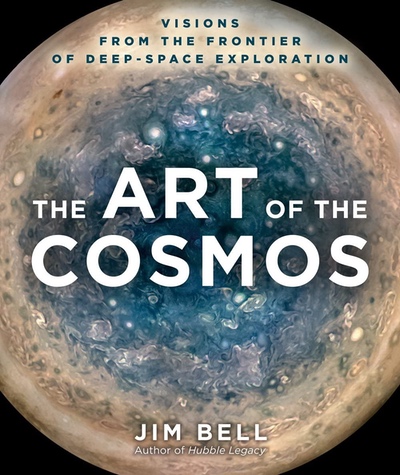Review: The Art of the Cosmosby Jeff Foust
|
| Bell believes that “deep space exploration has provided some of the most spectacular and humbling kinds of art that humans have ever produced.” |
In the book, he gathers more than 125 examples of such art, primarily photographs, that stand out as examples of cosmic art. They range from a sunset on Mars, tinged with shades of blue rather than orange and red, to a kilometer-high cliff on Comet Churyumov-Gerasimenko that draws parallels to El Capitan in Yosemite, to the Flame Nebula, its dark red dust contrasting with the bluish glow of ionized hydrogen.
Bell selected images that he said hewed to many of the characteristics of terrestrial art, like composition, lighting, and perspective. Those elements may be accidents of planned observations by spacecraft or telescopes, but in some cases, like the Martian sunset, planned at least with the potential for aesthetics as well as science. Many of the images in the book are products of sophisticated hobbyists who take raw images from missions and combine and reprocess them to create stunning new images.
Despite the title, The Art of the Cosmos leans strongly towards art of the solar system: three of the four chapters are devoted to solar system bodies, with the rest of the universe crammed into the final chapter. Bell acknowledges that “bias” in the introduction, noting his background working on planetary missions (including Mars, which may be why that planet gets most of one chapter, sharing it only with asteroids and comets.) That last chapter relies heavily on Hubble images; an interesting choice given there’s a much larger astrophotography community, producing their own fantastic images, than those processing images from spacecraft. That’s not to say the Hubble images aren’t works of art, only that there may be an ever greater variety to consider as well.
The Art of the Cosmos is not a book about the science of the solar system and universe, although Bell does include scientific explanations for the images. It is more of a celebration of the beauty of the cosmos, and a reminder that art and science are not distinct but, rather, intertwined.
| “Stories of space adventurers riding rocket-propelled vehicles into the space frontier became so accepted that no one questioned the various elements of these tales or why those elements fit together.” |
Note: we are using a new commenting system, which may require you to create a new account.
